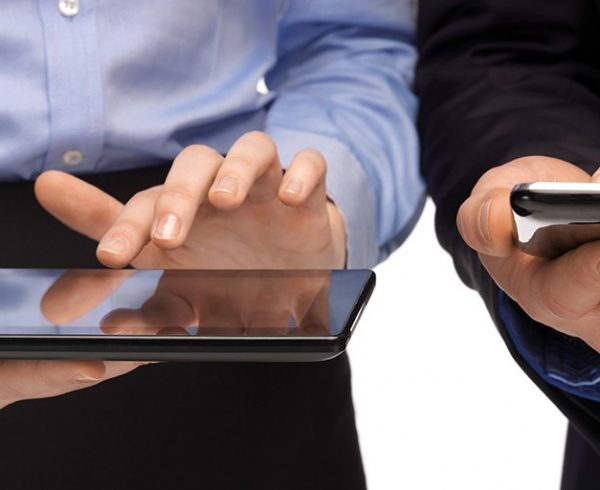Today, we cannot imagine staying away from our phones for even five minutes, let alone an hour or two. Thus, it is only natural that phones take up the roles that have traditionally belonged to other tools. One such avenue is learning. Mobile learning (m-Learning), today, is growing in the e-learning domain.

Mobile learning can be defined as the use of a personal electronic device for learning across multiple contexts. m-learning, by virtue, allows for a more intimate learning experience than others. And given how popular mobile phones are across developed and developing countries, the scope of this market is huge.
How the World is Using Mobile Learning
There are two main components driving m-learning – mobile devices and mobile operating systems. And thanks to the rapid growth in miniature hand-held devices along with the strength of high performing systems like Android and iOS, today, as far as interactive learning is concerned, mobile devices are capable of a lot of heavy lifting.
Using these capabilities, modern-day learning has been upgraded in an array of different ways. One such popular form of designing mLearning is by gamifying the learning solution.
Gamification is an interactive training mechanism that employs the human tendency to feed off rewards, to impart long-lasting knowledge. And mobile devices are designed for such an experience. A prevalent example is running induction programs on mobile devices.
Employees starting off at a new workplace have a ton of paperwork to go through. They also have to understand and learn about the products and services offered by the company. To make this experience less cumbersome, gamification works brilliantly.
Mobile device-based routines are created where each task allows the user to earn points and rewards. Through this process, without being overwhelmed, employees can actually enjoy themselves while learning more about their work responsibilities and company culture.
Also, another classic example of m-learning being used via gamification deals with trying to help employees understand the code of conduct in their workplace. Such exercises are usually implemented through the process of scored quizzes, which allow employees to not only follow the rules they are expected to abide by within their professional space but also to do so in a lighthearted manner.
Let us see some use cases of mobile learning:
Mobile Learning in Retail Industry :
Retail work requires the continuous presence of employees on the work floor. And m-learning, with its micro setup, is ideal for such an industry. Employees can learn to navigate their way through the store, understand floor plans, guidelines for customer service, etc.
Consider retail employees at a cosmetic store for example. They must learn about the different products they sell, the unique features, care instructions and side effects if any. All this can be made easy with gamified m-learning modules. Also, making such information readily available on mobile devices helps the employees deliver a smooth customer experience. Here are 10 ways to make performance-oriented retail training
Mobile Learning in Pharmaceutical Industry:
A lot of pharmaceutical companies have started using mLearning to train their sales staff, who take the newly minted drugs to medical professionals. Mobile learning is an advantage with respect to the dynamic nature of such a job.
As sales representatives do not have a fixed work location, it is challenging to arrange in-house training sessions. Such training, if organized, will also be far less effective. Instead, to ensure the employees are well versed with the knowledge of the drugs they are trying to sell, and are also abreast with rules and regulations dictated by the legal framework, m-learning is the best tool.
Pharma is a data-based industry as well. And mobile devices ensure that such data is passed along to every stakeholder quickly and accurately. Thus, mLearning has become a game-changer in the industry. Here’s how to build a mobile-ready training program for pharmaceutical industry.
Mobile Learning in Automotive Industry:
The auto industry is one of the most dynamic and technology-led sectors in the world. And employee training is a serious concern, as the overwhelming competition means that much of the growth depends on their staff.
However, in recent years, traditional training has taken a backseat. Although the employees are spread across the globe, they require the same information about the product, along with additional learning content based on their job profiles.
The accessible nature of m-learning combined with the removal of constraints of location and time makes it ideal for auto industry workers. The automobile industry also deals with a lot of dynamic data, making m-learning its ideal learning partner.

Customized Programs for Each Industry
Any training program works best when it is customized to suit the needs of the employees. And m-learning is no exception. Let us now see how L&D teams can customize the m-Learning programs for different industries.
1. Retail Industry
The retail industry has customer satisfaction set as one of its top-most goals. An m-learning application, that allows employees switch roles as customer or sales executives, can be built. This kind of role-play will enable employees to get inside the minds of their customers and understand the problems they face.
At the same time, the ones playing the role of a sales executive will continue to be trained in their job of handling an actual person; even if it is just a pretend customer.
2. Pharmaceutical Industry
One of the biggest challenges in the pharmaceutical industry is training the sales reps regarding the drug’s benefits and side-effects. The sales employees are the ones who will ultimately convince medical professionals across the board that this drug is the best choice for a given case.
And for that, they must know all the details, including statistics of the drug’s trials, composition etc. Such information can be challenging to master. But with the right m-learning program that aims at teaching in an interactive and engaging manner, such as quiz-based application, the information can be made much more easy-to-remember.
3. Automotive Industry
The staff in the showrooms are not only scattered across the globe but also need to uphold the same standards everywhere for the brand to stand out. m-learning allows application-based training, where each employee can take the same training course and thus be apprised of the same information and customer relationship standards. The L&D teams can create modules with AR-enabled content, where employees can point the mobile devices towards the product and a computer-generated visual with specs and details will be displayed on their mobile screens.
Conclusion:
m-learning can be effective for many sectors who find it hard to allocate time for their employees for training purposes. The interactive model also allows for far more efficient training. Slowly, but surely, mobile learning is becoming the first choice in training.
Related:
8 Reasons to Transform Your Learning Content to Mobile Learning Nuggets
6 Ways to Use Mobile Learning to Enhance Employee Productivity
MicroLearning vs Mobile Learning – Similarities and Differences











